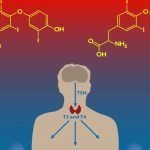Insights Into Vitex agnus-castus, Past and Present
Robin DiPasquale, ND, RH(AHG)
Found in the Verbenaceae family, Vitex agnus-castus, chaste tree berry, is an herb in our materia medica that can profoundly influence the endocrine system and hormonal balance for both women and men. Vitex can, at first glance, appear to be a simple female herb, used to address PMS, menstrual irregularities, and menopausal symptoms. When looking more closely, however, the story can become complex and may merit increased awareness and care when prescribing Vitex to patients.
Historic use of Vitex can be traced back to the Egyptian culture, 1500 – 2000 BC, in the heart of the Mediterranean region where the plant is native. In 450 BC, Hippocrates noted using Vitex to treat injuries, inflammations, enlarged spleen, and to help expel the placenta after childbirth. Five hundred years later, Dioscorides wrote in De Materia Medica his ideas for Vitex. “…a weight of 1 drachma in wine makes the menses come on earlier, detaches the embryo, attracts the milk, goes to your head, and brings sleep.” He also discussed the application to the nervous system, stating the use of Vitex for insanity, madness, and epilepsy. In the same time period, Pliny the Elder used Vitex to promote menstruation, as well as lactation in breastfeeding women. He also wrote of its diaphoretic action to decrease fever and relieve headaches.1 As the common name chaste tree berry indicates, in Rome and Athens the Vestal Virgins in the temples carried twigs of the Vitex tree to represent chastity. The use of Vitex berries as a spice on the food in the monasteries of Medieval Europe to decrease the monks’ libido brought forth the name monk’s pepper.
Although a Mediterranean plant, Vitex made its way to North America and was used by the Eclectic practitioners in the United States in the late 1800s and early 1900s. Eclectic Medical Institute members Harvey Wickes Felter and John Uri Lloyd describe Vitex as “a plant with a disagreeable odor, berries like peppercorns, and possessing a pungent taste.” They reported galactagogue and emmenagogue actions, and the suppression of sexual passions. Drop dosing, however, is suggested in impotence and sexual melancholia, pointing out the potential opposing actions of Vitex, depending on the dosing. These two Eclectics also brought forth the nervous system relationship of Vitex, a cousin to Verbena hastata, vervain, both plants of the Verbenaceae family. They describe Vitex as a remedy for sexual irritability with nervousness or melancholia, or mild dementia.2
In more current times, Vitex has been analyzed based on its pharmacognosy, as well as evaluated through a growing collection of studies in the literature, both pharmacologic and clinical. The major active constituents found in Vitex agnus-castus include the iridoid glycosides (aucubin and agnuside), flavonoids, alkaloids, and essential oils (including monoterpenes, diterpenes, and sesquiterpenes).3,4 The iridoid agnuside is often used as a marker in standardized preparations of Vitex. According to Kurt Schnaubelt, a leader in aromatherapy in the United States, there are over 40 compounds identified in the analysis of the essential oil of Vitex agnus-castus.5 The therapeutic use of the essential oil of this plant is relatively new, and much of the application is extrapolated from the uses we know of the herbal extract, that of creating proper estrogen-progesterone balance, particularly in the luteal phase. In preliminary studies with the essential oil, 1 gt qd of Vitex essential oil has shown effectiveness in treating symptoms of PMS without noticeable adverse effects.5
Vitex agnus-castus works through the hypothalamic-pituitary-ovarian (HPO) axis, affecting changes in hormone levels through the signaling and feedback loop between the higher organs in the brain and the ovaries. The mechanism of action appears to be agonistic activity on pituitary dopamine D2 receptors that inhibit the secretion of prolactin from the lactotrope cells, with additional pharmacological actions through the opioid receptors.6-8 Physiological results include a relative decrease in FSH, a relative increase in LH, an inhibition of prolactin, a relative increase in progesterone, and a normalizing of the luteal phase of the menstrual cycle.9
Vitex is used to address many gynecological symptoms or conditions, primarily those that occur in, or worsen during, the luteal phase. The literature shows the most effective use of Vitex for treatment of PMS, menstrual cycle irregularities, mastalgia, and some symptoms of premenstrual dysphoric disorder (PMDD).
Common PMS symptoms that have been effectively treated with chaste tree berry include bloating, fluid retention, cravings, breast tenderness, constipation, headaches, acne, an exacerbation of herpes simplex, as well as some areas of emotional lability. The general outcome of 3 studies from 2000 and 2001 was that after 3 months of treatment, Vitex was equally or more effective in decreasing PMS symptoms than placebo.10-12 Remember, PMS can be of several types with varying imbalances, and Vitex or any one treatment option does not address the needs of all women.
When evaluating mastalgia, treatment with Vitex throughout the cycle for 3 months for breast pain showed diminished intensity of the breast pain.13,14
Premenstrual dysphoric disorder is defined as a severe form of PMS, occurring between ovulation and the start of the menses, with possible symptoms of irritability, anger, anxiety, and depression. One study compared Vitex 20-40 mg/d for 8 weeks to fluoxetine 20-40 mg/d for 8 weeks. The outcome showed Vitex more effective for breast tenderness, swelling, cramps, and food cravings, while fluoxetine was more effective for symptoms of depression, irritability, insomnia, nervous tension, and feeling out of control.15 From my own experience, I do not use Vitex in women who suffer PMDD because Vitex can exacerbate the depressed feelings. I don’t necessarily want to increase progesterone levels since it appears women with this type of PMS already have an imbalance toward relatively higher progesterone.
Be aware that these symptoms or conditions could possibly be a result of latent hyperprolactinemia- slightly elevated prolactin levels causing a decrease in progesterone levels, resulting in a shorter luteal phase. Prolactin becomes increased through pregnancy and breastfeeding, athlete-level exercise, extreme or prolonged stress, food ingestion, dehydration, sexual orgasm, and nipple stimulation in non-lactating women. In many of these circumstances, the body has the ability to bring the levels back to balance over time. High levels or sustained high levels of prolactin can be due to hypothyroidism (increased TRH), a prolactinoma in the pituitary, adrenal or ovarian tumor, Parkinson’s disease, MS, cirrhosis of the liver, and the use of particular medications. The medications include tranquilizers, MAO inhibitors, tricyclic antidepressants, anti-ulcer drugs, some hypertension drugs, high estrogen OCP or HRT, opiates, cocaine, and alcohol, especially beer.16
When working with a woman presenting with irregular menstrual cycles, amenorrhea, PMS, or other luteal phase dysfunctions, especially if galactorrhea is present, be aware of the potential need to test for prolactin levels to rule out hyperprolactinemia. If hyperprolactinemia is present, strongly consider sending for CT scan or MRI of the pituitary to rule out a prolactinoma. Also check the TSH level to rule out hypothyroidism. Auto-antibodies – anti-TPO and antithyroglobulin – may be elevated, but can be evaluated after the TSH level results show elevated numbers. Consider other clinical etiologies for elevated prolactin. Treatment using Vitex agnus-castus can correct symptoms of hyperprolactinemia through HPO influence, but you wouldn’t want to miss a prolactin-secreting tumor.
Vitex can be part of an effective treatment to address women with infertility issues. Two German uncontrolled studies with infertile women aged 23-39 with low progesterone treated with Vitex for 3 months, showed 25 of the 45 women with normal progesterone levels, a general lengthening of the luteal phase, and 7 women became pregnant.17,18 Proceed with awareness, in particular when other infertility treatments are being implemented. A British medical journal reported a case of multiple follicular development in a woman undergoing IVF treatment while self-administering Vitex.19
Using Vitex with men has its historic context from the monasteries, and certainly has implications for current application in male reproductive health, but is less studied in the current literature. One study corroborated the prolactin-lowering effect in healthy men, however the role of prolactin is unknown.20 One study showed it inhibits 5-alpha reductase, potentially useful in treatment for benign prostatic hyperplasia. Others showed it potentiates the effect of testosterone in prostate tissue.21
The current use of Vitex by herbalists Matthew Becker and Patricia Huenecke to treat conditions affecting the nervous system merits further consideration. Becker speaks of using Vitex “for hysteria, nervousness, and hyperactivity.” Huenecke, an Australian herbalist, uses Vitex for ADD and ADHD in children to normalize the energy of the body through stimulating the pituitary gland.1
Melatonin secretion is affected by sleep disorders, when jet lagged, and for those who do shift work. In a double blind, placebo controlled study with 20 healthy males, Vitex was shown to increase night time melatonin output by 60%. The study used 120–480 mg per day.22 This research opens the possibility of working with Vitex to help regulate melatonin output in individuals who are not always able to do their sleeping at night.
Dosing Ideas
In the herbal traditions, Vitex has been prepared as a tea, tincture, or in capsules/tablets. All these preparations have shown effective outcomes. I had one herbalist friend who brewed the ground berries in her coffee maker and drank one cup every morning throughout her perimenopausal time. Tincture or capsules/tablets seem easier for most people to be compliant and consistent with. Many herbalists will dose once in the morning around 8 a.m., the time of the pituitary gland. Other practitioners will include Vitex in a formula, or give as a simple, dosing throughout the day. I prefer the once in the morning dose, and we don’t know for sure what is the most effective. We do know, however, that Vitex has a focus on the luteal phase, so I often dose only during the luteal phase, or double the dose during that time of the cycle. More recently, I am experimenting with drinking a tea of the leaves of Vitex rather than the berries, but I don’t have anything yet to report.
A collection of current clinical trials is looking at the dose-dependent effectiveness of Vitex. Some recommendations to consider are:
- For PMS, corpus luteal insufficiency, and latent hyperprolactinemia, 200-500 mg/d divided.
- For PCOS or conditions with moderate prolactinemia, 200-1000 mg/d divided, and with higher prolactin levels, 1000-2000 mg/d divided.
- For uterine fibroids and endometriosis, or acne and breast cysts, the dose may need to go up as high as 2000 mg/d in divided doses.
With most female reproductive conditions, the therapy should be given for a minimum of 3 months, then re-assessed.
As a summary, I am suggesting care should be used when considering Vitex agnus-castus in treatment. Although a very effective herb, the interface it has with the complexity of the endocrine system requires consideration for etiology and pathophysiology of the symptoms or condition presented, careful evaluation of the appropriate dosing, and a watchful oversight of the progress of the healing process.
 Robin DiPasquale, ND, RH(AHG) earned her degree in naturopathic medicine from Bastyr University in 1995 where, following graduation, she became a member of the didactic and clinical faculty. For the past eight years, she has served at Bastyr as department chair of botanical medicine, teaching and administering to both the naturopathic medicine program and the bachelor’s of science in herbal sciences program. Dr. DiPasquale is a clinical associate professor in the department of biobehavioral nursing and health systems at the University of Washington in the CAM certificate program. She loves plants, is published nationally and internationally, and teaches throughout the U.S. and in Italy about plant medicine. She is an anusara influenced yoga teacher, teaching the flow of yoga from the heart. She currently has a general naturopathic medicine practice in Madison, Wis., and is working with the University of Wisconsin Integrative Medicine Clinic as an ND consultant.
Robin DiPasquale, ND, RH(AHG) earned her degree in naturopathic medicine from Bastyr University in 1995 where, following graduation, she became a member of the didactic and clinical faculty. For the past eight years, she has served at Bastyr as department chair of botanical medicine, teaching and administering to both the naturopathic medicine program and the bachelor’s of science in herbal sciences program. Dr. DiPasquale is a clinical associate professor in the department of biobehavioral nursing and health systems at the University of Washington in the CAM certificate program. She loves plants, is published nationally and internationally, and teaches throughout the U.S. and in Italy about plant medicine. She is an anusara influenced yoga teacher, teaching the flow of yoga from the heart. She currently has a general naturopathic medicine practice in Madison, Wis., and is working with the University of Wisconsin Integrative Medicine Clinic as an ND consultant.
References
- Wood M. The Earthwise Herbal: A Complete Guide to Old World Medicinal Plants. Berkeley, CA: North Atlantic Books; 2008.
- Felter HW, Lloyd JU. King’s American Dispensatory. 18th ed. Sandy, OR: Eclectic Medical Publications; 1983.
- Bruneton J. Pharmacognosy: Phytochemistry, Medicinal Plants. 2nd ed. Paris: Lavoisier; 1999.
- Du Mee C. Vitex agnus castus. Aust J Med Herb. 1993;5:63-65.
- Schnaubelt K. Medical Aromatherapy: Healing with Essential Oils. Berkeley, CA: Frog Books; 1999.
- Jarry H, Leonhardt S, Gorkow C, Wuttke W. In vitro prolactin but not LH and FSH release is inhibited by compounds in extracts of Agnus castus: direct evidence for a dopaminergic principle by the dopamine receptor assay. Exp Clin Endocrinol. 1994;102(6):448-454.
- Meier B, Berger D, Hoberg E, Sticher O, Schaffner W. Pharmacological activities of Vitex agnus-castus extracts in vitro. Phytomedicine. 2000;7(5):373-381.
- Sliutz G, Speiser P, Schultz AM, Spona J, Zeillinger R. Agnus castus extracts inhibit prolactin secretion of rat pituitary cells. Horm Metab Res. 1993;25(5):253-255.
- Milewicz A, Gejdel E, Sworen H, et al. Vitex agnus castus extract in the treatment of luteal phase defects due to latent hyperprolactinemia. Results of a randomized placebo-controlled double-blind study [in German]. Arzneimittelforschung. 1993;43(7):752-756.
- Schellenberg R. Treatment for the premenstrual syndrome with agnus castus fruit extract: prospective, randomized, placebo-controlled study. BMJ. 2001;322(7279):134-137.
- Loch EG, Selle H, Boblitz N. Treatment of premenstrual syndrome with a phytopharmaceutical formulation containing Vitex agnus castus. J Womens Health Gend Based Med. 2000;9(3):315-320.
- Berger D, Schaffner W, Schrader E, Meier B, Brattström A. Efficacy of Vitex agnus castus L. extract Ze 440 in patients with premenstrual syndrome (PMS). Arch Gynecol Obstet. 2000;264(3):150-153.
- Halaska M, Raus K, Bĕles P, Martan A, Paithner KG. Treatment of cyclical mastodynia using an extract of Vitex agnus castus: results of a double-blind comparison with a placebo [in Czech]. Ceska Gynekol. 1998;63(5):388-392.
- Wuttke W, Jarry H, Christoffel V, Spengler B, Seidlová-Wuttke D. Chaste tree (Vitex agnus-castus)–pharmacology and clinical indications. Phytomedicine. 2003;10(4):348-357.
- Atmaca M, Kumru S, Tezcan E. Fluoxetine versus Vitex agnus castus extract in the treatment of premenstrual dysphoric disorder. Hum Psychopharmacol. 2003;18(3):191-195.
- Trickey R. Women, Hormones and the Menstrual Cycle: Herbal and Medical Solutions from Adolescence to Menopause. St. Leonards, Australia: Allen & Unwin; 1998.
- Propping D, Katzorke T. Treatment of corpus luteum insufficiency. Z Allg Med. 1987;63(31):932-933.
- Propping D, Katzorke T, Belkien L. Diagnostik und Therapie der Gelbkörperschwäche in der Praxis. Therapiewoche. 1988;38(41):2992-3001.
- Cahill DJ, Fox R, Wardle PG, Harlow CR. Multiple follicular development associated with herbal medicine. Hum Reprod. 1994;9(8):1469-1470.
- Merz PG, Gorkow C, Schrödter A, et al. The effects of a special Agnus castus extract (BP1095E1) on prolactin secretion in healthy male subjects. Exp Clin Endocrinol Diabetes. 1996;104(6):447-453.
- Horrobin DF. Prolactin: Physiology and Clinical Significance. Lancaster, PA: Medical and Technical Publishing; 1973:53.
- Dericks-Tan JS, Schwinn P, Hildt C. Dose-dependent stimulation of melatonin secretion after administration of Agnus castus. Exp Clin Endocrinol Diabetes. 2003;111(1):44-46.










